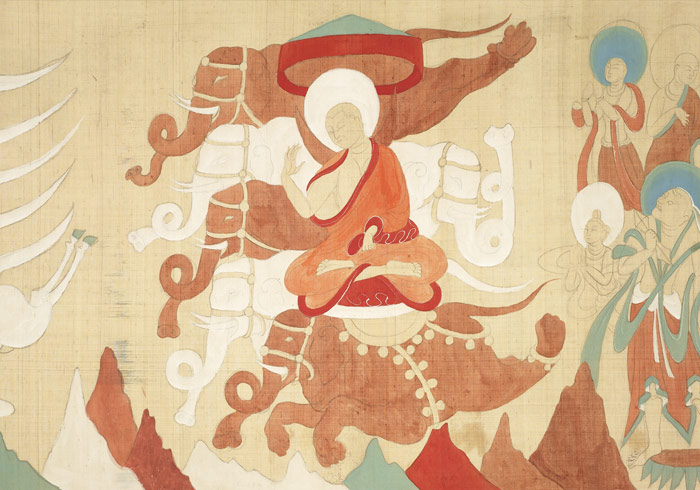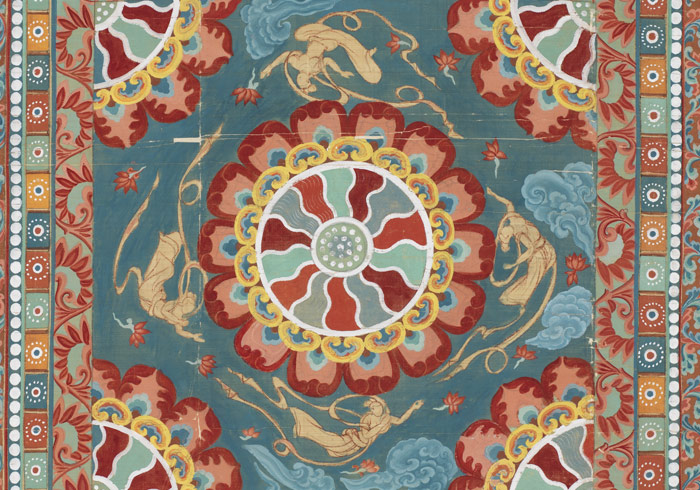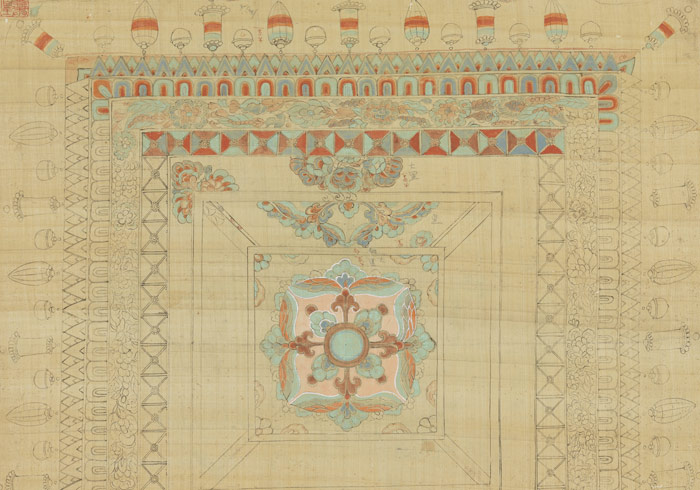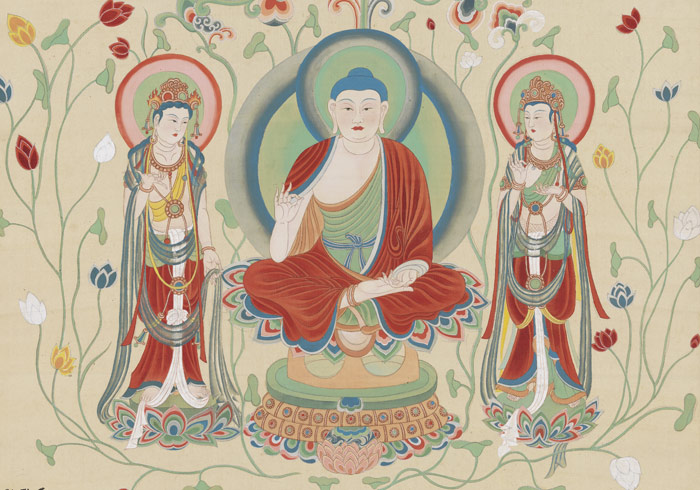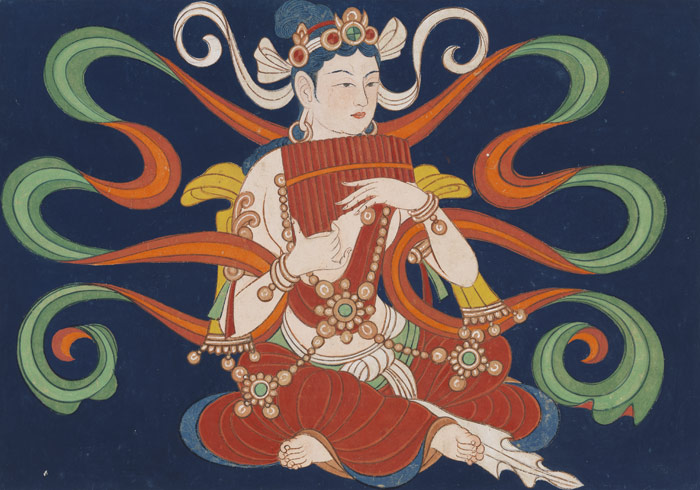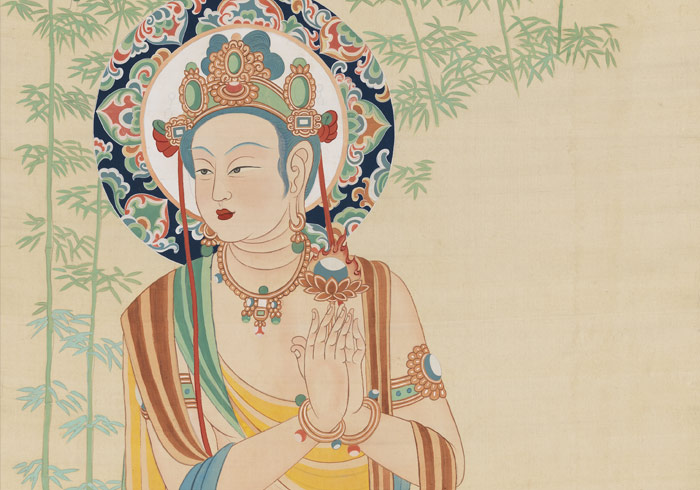Early in the 1940s, Yeh Kung-chao (a prominent politician of the ROC) encouraged Chang Dai-chien to expand his art career by "forging a path of his own" and taking the responsibility to become a changemaker in Chinese painting. It would become a catalyst behind Chang Dai-chien's travels to the caves of Buddhist art in Dunhuang. In more than two-and-a-half years of study there, Chang produced approximately 276 copies of wall paintings. Breaking through the barrier of Song and Yuan painting styles, he was able to go back even further to the high antiquity of Chinese painting in the Northern Dynasties to Tang period. Major changes became apparent in Chang's ideas on and practice of painting as a result. For example, he spent more time focusing on Buddhist and figure painting, refining the quality of his lines, pursuing the revival of outlines with coloring, finding magnificence in trifling details, turning brevity into precision, and representing ladies in curvaceous form. Developing a beautifully refined yet grand manner, it was a refreshing and eye-opening revelation to him. In this exhibition are such figure paintings as Chang Dai-chien's copies of Shakyamuni Buddha preaching, a bodhisattva at the Yulin grottoes, and a Song dynasty musician figure. They display the fluid dynamism of Chang's lines, his dazzling use of beautiful colors, and the spirited and full figures he depicted. Together, these masterpieces not only represent the essence of ancient Chinese wall painting, they also testify to how Chang Dai-chien transformed antiquity into something refreshingly new and his ideas on forging a new path in Chinese art during modern times.
Copy of a Northern Wei Painting of Sumagadha's Cause for Seeking the Buddha from Mogao Cave 257 at Dunhuang
- Chang Dai-chien (1899-1983), Republican period
- Handscroll, ink and colors on silk, 62 x 591.7 cm
Mr. Chang Dai-chien, the artist, donated this painting to the National Palace Museum.
Copy of an Early Tang Painted Vaulted Ceiling at a Mogao Cave at Dunhuang
- Chang Dai-chien (1899-1983), Republican period
- Hanging scroll, ink and colors on silk, 64.6 x 65.1 cm
Mr. Chang Dai-chien donated this painting to the National Palace Museum.
Copy of a High Tang Painted Vaulted Ceiling at a Mogao Cave at Dunhuang
- Chang Dai-chien (1899-1983), Republican period
- Hanging scroll, ink and colors on silk, 68 x 67 cm
Mr. Chang Dai-chien donated this painting to the National Palace Museum.
Copy of Shakyamuni Preaching the Law at Cave 11 of the Western Thousand Buddha Caves at Dunhuang
- Chang Dai-chien (1899-1983) and Chang Hsin-te (ca. 1922-1953), Republican period
- Hanging scroll, ink and colors on silk, 119.7 x 96.9 cm
The artist, Mr. Chang Dai-chien, donated this painting to the National Palace Museum.
Copy of a Song Painting of a Musician from Mogao Cave 327 at Dunhuang
- Chang Dai-chien (1899-1983), Republican period
- Hanging scroll, ink and colors on paper, 51.4 x 72.4 cm
Mr. Chang Dai-chien donated this painting to the National Palace Museum.
Copy of a Tang Painting of a Bodhisattva in Cave 28 at the Anxi Yulin Grottoes in Dunhuang
- Chang Dai-chien (1899-1983) and the monk Angji, Republican period
- Hanging scroll, ink and colors on silk, 237.2 x 96.5 cm
Mr. Chang Dai-chien donated this painting to the National Palace Museum.

